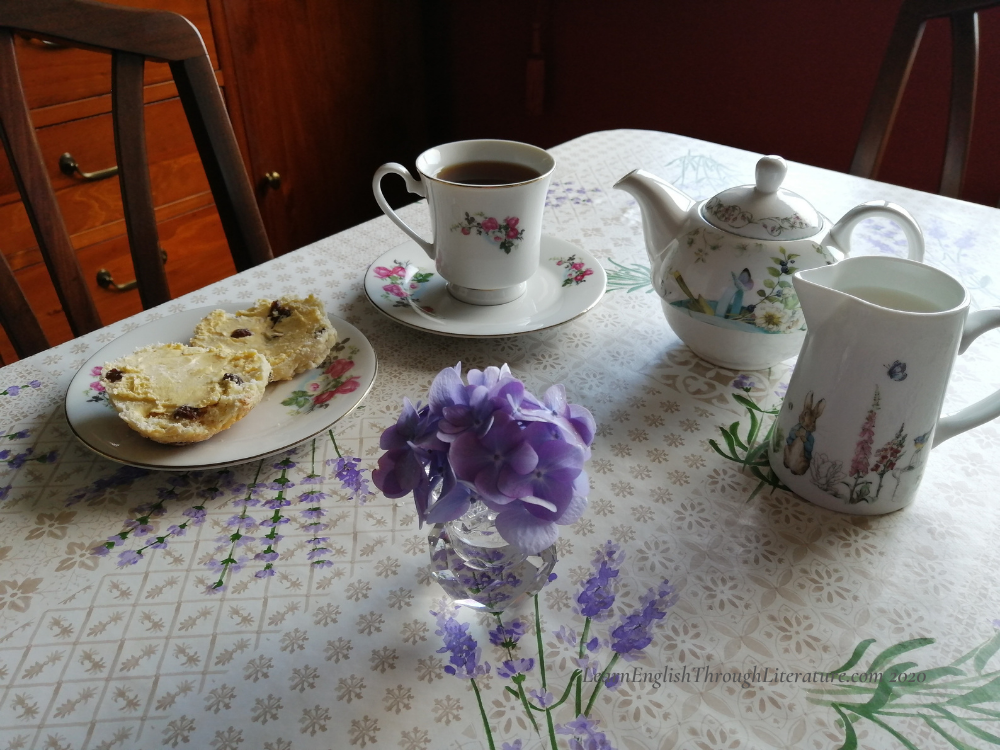Teatime! A light dinner eaten in the late afternoon or evening that is still popular in Britain and Ireland.
I’m at home alone this evening, so I decided to serve my tea and scone on my Grandmother’s china, an heirloom passed down through the years. However, teatime is traditionally a time for the family (and often neighbours) to gather together and share a light meal – teatime in Ireland can be any time between 4pm and 8pm.
Unlike the famous ‘cream tea’ that tourists love to try when they visit Britain or Ireland, our daily habit of ‘having our tea’ requires little effort to prepare and enjoy: a cup and saucer, a milk jug and teapot, a small plate, and a simple scone or slice of bread with butter or jam.
The only additional ‘touch’ today has been a small hydrangea flower in a vase, pretty and fresh from the garden!
There are many instances in literature where ‘teatime’ is mentioned – sometimes as a simple daily ritual like mine; and sometimes as an ‘afternoon tea’ or even a ‘cream tea’ today.
In Elizabeth Gaskell’s Cranford (1853), a novella full of loosely connected short stories, we are told about what happened one evening when a group of village ladies visit the aristocratic Mrs Jamieson and ‘stay to tea’.
Mrs Jamieson has lovely china (cups, plates), cutlery (forks, spoons, knives), and delicious food; but, sadly for her hungry guests, she does not like sharing her tea as much as she does with her pet dog Carlo:
📘’In a few minutes tea was brought. Very delicate was the china, very old the plate, very thin the bread and butter, and very small the lumps of sugar. Sugar was evidently Mrs Jamieson’s favourite economy. … In the little silver jug was cream, in the larger one was milk. As soon as Mr Mulliner came in, Carlo began to beg, which was a thing our manners forbade us to do, though I am sure we were just as hungry; and Mrs Jamieson said she was certain we would excuse her if she gave her poor dumb Carlo his tea first.’
👉 Check my next post for more observations on this passage …




